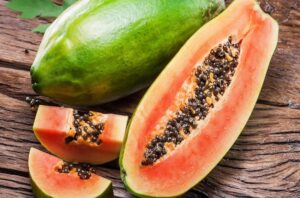Coco coir is becoming a more and more common hydroponic growth media type. If you’re new to hydroponics, there are a ton of advantages to growing with coconut coir that you can and should take advantage of.
Numerous consumers, including container gardeners, hydroponic growers, professional nurseries, and even amateurs attempting indoor gardening, are fond of coconut coir, also known as coco coir. Due in part to its durability, advantages, and resemblance to soil and peat moss is its surge in popularity.
read also: 10 Surprising Benefits Of Banana
What is Coconut Coir?
We must first comprehend what coconut coir is in actuality.
The coconut husk was once seen as trash when coconuts were harvested for their delectable meat and juice. The entire coconut, from the husk to the inside shell, was a waste product. until people understood it could be used in a wide range of household and horticultural items.
The coconut seed’s outer layer and everything in between are referred to as coco coir. Coir is made up of two different kinds of fibers: brown and white. Brown coir, which is more stronger but less flexible, is made from mature, ripe coconuts. White fibers, which come from unripe coconuts, are far more flexible but considerably weaker.
read also: How to plan meals for the week ahead
How is Coco Coir Made?
They must first take the coir out of the coconuts. The husks are softened and made loose by soaking them in water. Either freshwater or tidal waters are used for this. The coconut coir will absorb a lot of salt if it is used in tidal waters; this salt will then need to be washed off by the maker.
They are then taken out of the water bath and allowed to dry for over a year. The drying of the coir, which is a lengthy process, results in the creation of bales. Then, these bales are cut up and processed into a variety of products, such as chips, “croutons,” and traditional crushed coconut coir.
There’s a whole lot more that goes into the process of making coco coir safe and optimal for horticultural use, but we’ll get into that below in the article.
Different types of coir products
Variations that slightly alter the final product’s size and form throughout the production process might be made to adapt it to certain needs. Coconut coir may be bought in three different forms: chips, fiber, and pith.
Pith: This substance, sometimes referred to as coconut coir in peat form, resembles finely crushed peat moss or coconut husks. To avoid the release of salts when used, it must be thoroughly aged and washed.
Fiber: The long fibers that were extracted from the husks can be utilized without additional processing after substantial drying. This is commonly used to create the liners for hanging baskets and other ornamental arrangements.
Chips: Coco chips, which act like a natural kind of expanding clay pellet, may be found anywhere between the pith and the fiber. The chunks aid in moisture retention by forming air pockets inside a growth medium or soil.
Pros and Cons to Coconut Coir
There are amazing benefits to using coconut coir in your garden. But just like any other kind of growing media, there are also some downsides to consider before you buy
Benefits of Coco Coir
Good transition from soil gardening: Because the two media resemble each other so well, growing in coco coir has the same feel as growing in soil.
water retention: One of the best growth media for water retention is coco coir, which also creates a favorable environment for plants.
Environmentally friendly: Even if I like using sphagnum peat moss in the yard, there are still environmental risks associated with peat moss. Coconut coir doesn’t experience these issues.
insect-neutral: Coconut coir is insect-neutral since most garden pests do not like to settle in it, adding even another layer of protection to your integrated pest control strategy for your garden.
In comparison to “conventional hydroponics,” it may be simpler: If you’ve never grown plants hydroponically, starting with coconut coir is a wise move.
How to Choose High Quality Coco Coir
The methods used in its gathering, preparation, and processing are the most crucial aspects of high-quality coco coir. You must choose suppliers that adhere to all of the industry’s best practices for producing coco coir because none of these elements are entirely within your direct control.
The coir is preserved in heaps for a few years after being extracted from the coconuts. Due to the pH of coco coir at its natural state, this makes it vulnerable to diseases. The majority of manufacturers that encounter this will chemically sanitize the coir before putting it to use in your garden. The hazards associated with this include the potential for early peat and fiber degradation.
They will:
- Avoid situations that are conducive to pathogen growth
- Have a dedicated system to control how the coconut coir ages
- Rinse and wash the coir to flush out salts
- Create the right blend of pith, fibers, and chips
- Package and store their product correctly
How to use coco coir
One of the best things about using coconut coir is it works well in a variety of different ways, making it a multi-function product.
- as a part of potting mixes devoid of dirt. To form potting soil, it is often combined with ingredients like vermiculite, perlite, and maybe another organic material like compost or peat moss.
- In the garden, as a soil amendment to improve the drainage and porosity of clay soils or to raise the capacity of sandy soils to store water.
- while rooted plant tissue cuttings, as a growth medium for seed beginning and propagation.
- In hydroponic gardening systems, as a hydroponic growth media and a source of support for roots. Its pH is neutral, so there is no need to adjust it before use, and its high CEC aids in keeping nutrients in the root zone.
- as a growth medium for some exotic plants, including ferns, bromeliad-type plants, anthuriums, and orchids.

